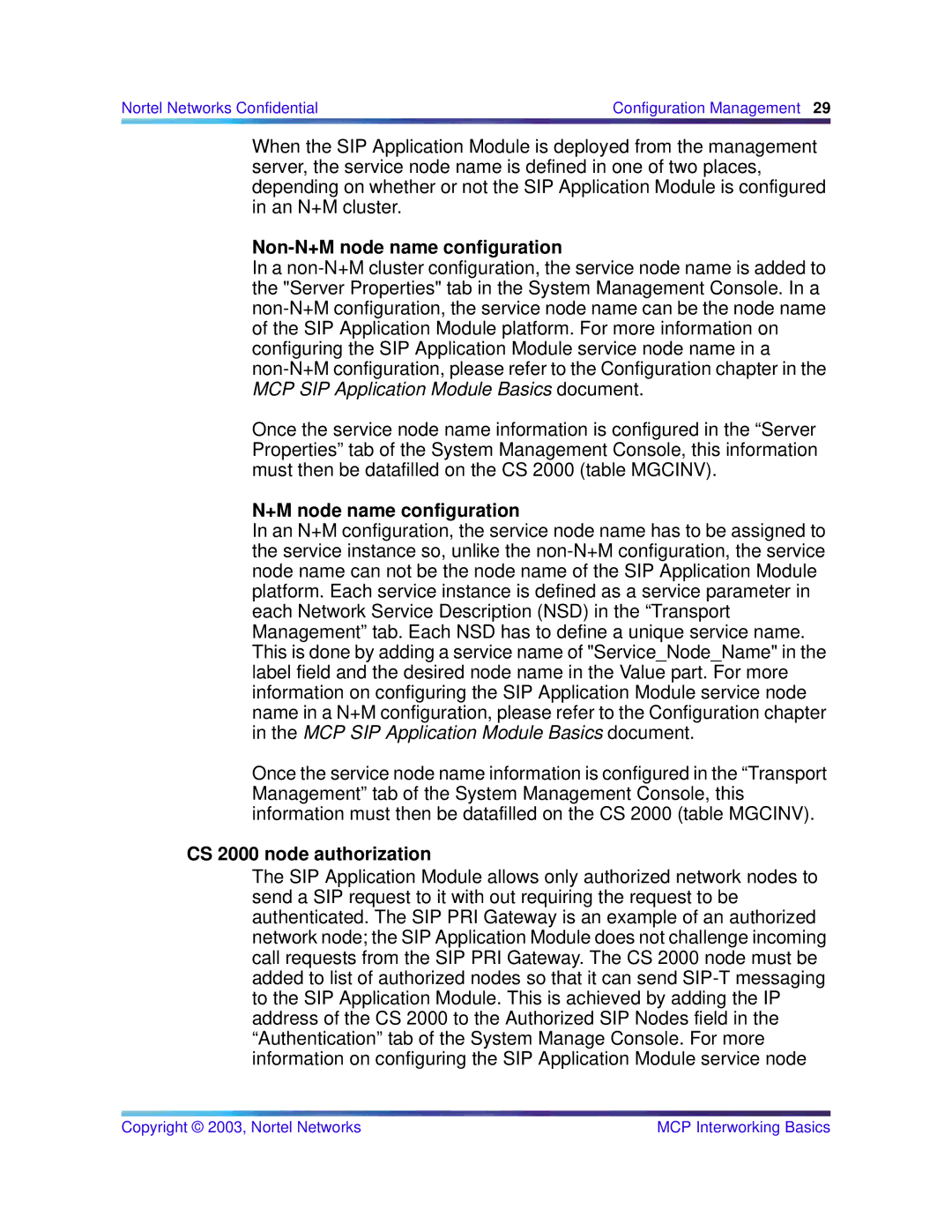
Nortel Networks Confidential | Configuration Management 29 |
|
|
When the SIP Application Module is deployed from the management server, the service node name is defined in one of two places, depending on whether or not the SIP Application Module is configured in an N+M cluster.
Non-N+M node name configuration
In a
Once the service node name information is configured in the “Server Properties” tab of the System Management Console, this information must then be datafilled on the CS 2000 (table MGCINV).
N+M node name configuration
In an N+M configuration, the service node name has to be assigned to the service instance so, unlike the
Once the service node name information is configured in the “Transport Management” tab of the System Management Console, this information must then be datafilled on the CS 2000 (table MGCINV).
CS 2000 node authorization
The SIP Application Module allows only authorized network nodes to send a SIP request to it with out requiring the request to be authenticated. The SIP PRI Gateway is an example of an authorized network node; the SIP Application Module does not challenge incoming call requests from the SIP PRI Gateway. The CS 2000 node must be added to list of authorized nodes so that it can send
Copyright © 2003, Nortel Networks | MCP Interworking Basics |
